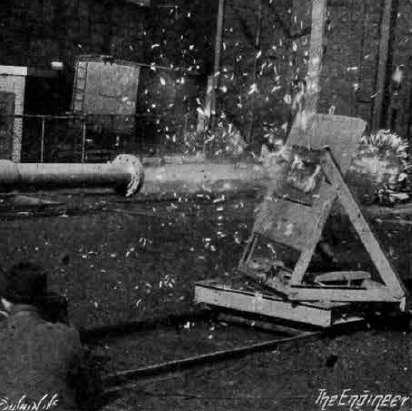
Whatever the provenance of this particular tale, this piece from The Engineer's archive demonstrates that protecting windscreens from bird-strikes has exercised the industry's finest minds for longer than readers might expect.
READ ARCHIVE COVERAGE OF THE CHICKEN CANNON HERE
'There are many minor problems of flight about which little is heard,' reported the magazine. 'one of them is provided by migratory birds which, when struck by a fast moving aeroplane, may cause serious damage.'
'It has been recorded in America, for instance, that a bird once not only broke through the windscreen of a passenger aeroplane, but punched a hole through the metal bulkhead behind the pilot, travelled the full length of the passenger compartment and finally came to rest… among the luggage!'
To aid the development of bird-proof windscreens, The Engineer reported on the development of the world's very first 'chicken cannon', designed by the Westinghouse Electric and Manufacturing company to subject a variety of windscreen specimens to 'such missiles as chickens and turkeys.'
Explaining the operation of the device, the magazine wrote: 'the apparatus was mounted on an undercarriage carried on rails. It consisted of a motor-drive air compressor supplying a large receiver at pressures up to 200lbs per sq in (nearly 14 bar). The receiver supplied air to the cannon's barrel — made from lengths of ordinary piping — mounted above it. Windscreen materials were mounted on a sheet steel easel.'
The article said the the gun enabled engineers to formulate a new bird-strike resistant windscreen. 'a construction has been developed that will withstand the impact of a 15lb bird at speeds up to 200mph,' it said 'On the outside there is a layer of full tempered glass. Next, there is an air space, behind which is a sandwich of two sheets of glass separated by a thick filling of plastic.'




April 1886: the Brunkebergs tunnel
First ever example of a ground source heat pump?